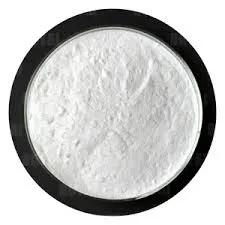
Nov . 06, 2024 00:55 Back to list
HPMC Production Facility Specializing in Hydroxypropyl Methyl Cellulose Manufacturing
HPMC A Comprehensive Overview of Hydroxypropyl Methyl Cellulose Production
Hydroxypropyl methyl cellulose (HPMC) is a versatile and widely used compound in various industries, including pharmaceuticals, food, cosmetics, and construction. As a non-ionic, water-soluble cellulose ether, HPMC has gained popularity due to its unique properties, including thickening, binding, film-forming, and emulsifying abilities. This article delves into the production process of HPMC, its applications, and the significance of HPMC factories in meeting global demand.
Production Process of HPMC
The manufacture of HPMC involves several key steps, starting with the selection of raw materials. The primary component is cellulose, which is derived from natural sources such as wood pulp or cotton. The production is initiated by treating cellulose with an alkaline solution to produce alkali cellulose. This step is crucial, as it enhances the reactivity of cellulose, making it more amenable to subsequent modifications.
Following this, the alkali cellulose is reacted with propylene oxide and methyl chloride. Propylene oxide is responsible for the hydroxypropyl substitution, while methyl chloride provides the methyl groups. This reaction occurs in a controlled environment to ensure optimal substitution levels and to prevent any undesirable side reactions. The degree of substitution directly influences the properties of HPMC, affecting its solubility, viscosity, and thermal stability.
Once the reaction is complete, the mixture is neutralized and hydrolyzed to obtain HPMC in powdered form. This powder is then washed, dried, and milled to achieve the desired particle size. Quality control is paramount during this stage, as the final product must meet strict industry standards for purity and performance.
Applications of HPMC
Due to its favorable properties, HPMC finds extensive applications across various sectors. In the pharmaceutical industry, it is commonly used as a binder in tablet formulations and as a coating agent. Its ability to form a gel when mixed with water makes it an excellent excipient for controlled-release drug formulations.
hpmc-hydroxypropyl methyl cellulose factory

In the food industry, HPMC serves as a food additive, primarily as a thickener, emulsifier, and stabilizer. Its use enhances the texture and shelf life of various food products, including sauces, dressings, and dairy products. Additionally, it is utilized in gluten-free baking as a substitute for gluten, providing essential structure and moisture retention.
The construction industry also benefits significantly from HPMC. It is an essential component in dry-mixed mortar products, such as tile adhesives and joint compounds, where it improves workability, water retention, and adhesion properties. Moreover, HPMC contributes to the performance of sealants and paints, enhancing their consistency and application characteristics.
The Importance of HPMC Factories
With the growing demand for HPMC in various applications, the significance of HPMC factories cannot be overstated. These manufacturing facilities are crucial in ensuring a consistent supply of high-quality HPMC to meet the needs of different industries. Modern HPMC factories utilize advanced technology and process optimization techniques to enhance production efficiency and minimize environmental impact.
Additionally, as sustainability becomes a focal point in many industries, HPMC factories are increasingly adopting eco-friendly practices. This includes sourcing renewable raw materials and implementing waste reduction strategies throughout the production process. By focusing on sustainability, HPMC manufacturers can not only meet regulatory requirements but also cater to the growing consumer demand for environmentally-conscious products.
Conclusion
In summary, hydroxypropyl methyl cellulose (HPMC) plays a vital role in various industries due to its unique properties and wide-ranging applications. The production process of HPMC requires meticulous attention to detail, from raw material selection to final quality control. HPMC factories are essential in ensuring a steady supply of this valuable compound, while also striving for sustainable practices. As industries continue to evolve, the importance of HPMC and its manufacturing processes will only continue to grow, driving innovation and development in a multitude of fields.
-
Versatile Hpmc Uses in Different Industries
NewsJun.19,2025
-
Redispersible Powder's Role in Enhancing Durability of Construction Products
NewsJun.19,2025
-
Hydroxyethyl Cellulose Applications Driving Green Industrial Processes
NewsJun.19,2025
-
Exploring Different Redispersible Polymer Powder
NewsJun.19,2025
-
Choosing the Right Mortar Bonding Agent
NewsJun.19,2025
-
Applications and Significance of China Hpmc in Modern Industries
NewsJun.19,2025







